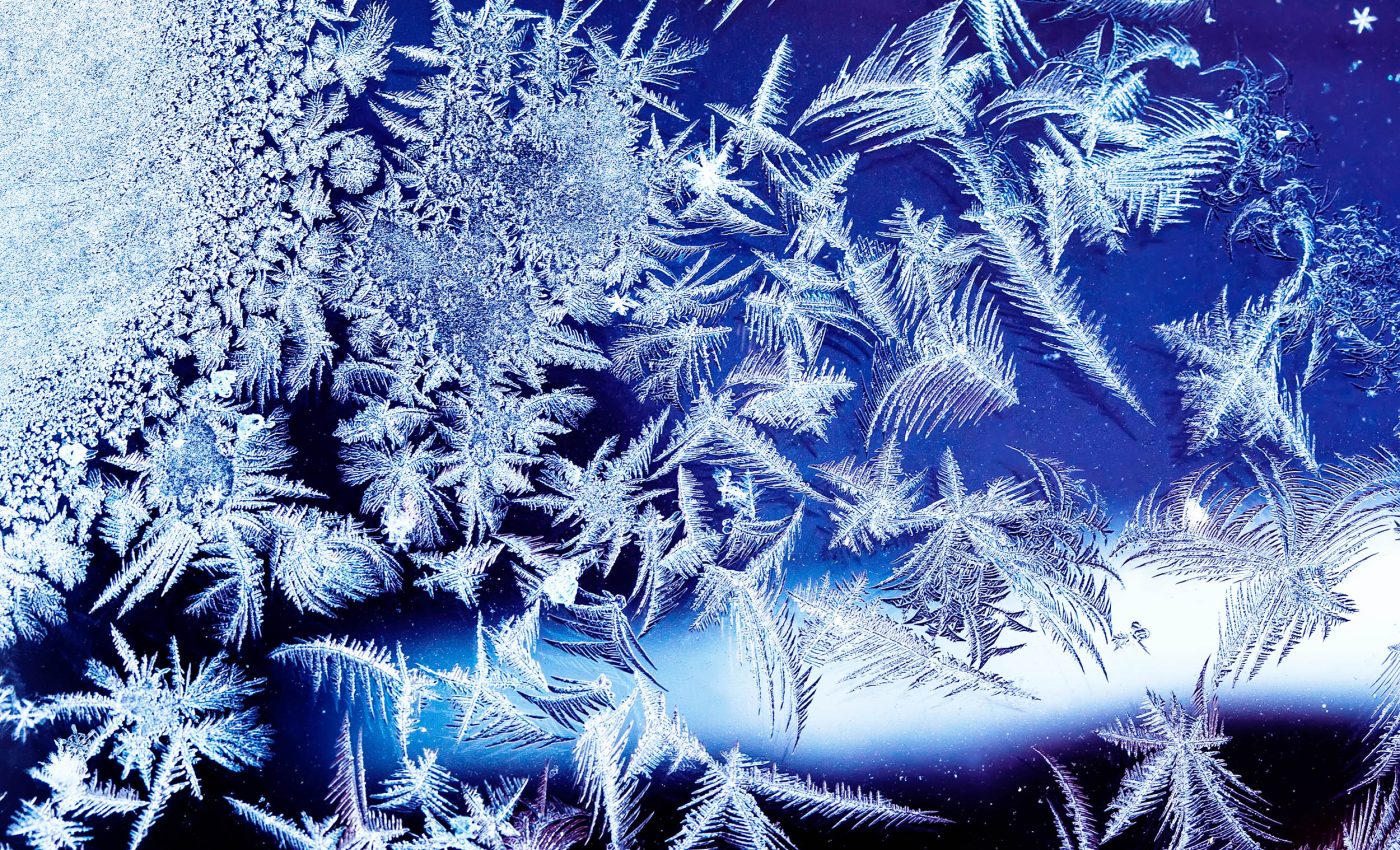
Scientists discovered a new and unusual form of ice called 'Ice 0'
Water rarely behaves the way casual observers expect. Chill a pond on a still night and it hardens from the top down, but zoom in far enough and the story grows far more intricate.
Scientists have cataloged more than 20 distinct kinds of ice, each forming under its own mix of temperature and pressure. The familiar hexagonal variety that turns into snowflakes is only one chapter in a much thicker book.
That complexity matters. How and where ice first appears shapes the way clouds brighten the sky, how food keeps its texture in the freezer, and even how frost creeps across a windshield.
Until now, the earliest moments of freezing – especially in tiny droplets – have remained hazy.
Beneath the surface of “Ice 0”
New simulations point to an elusive form of ice, nicknamed ice 0, as the spark that starts the freeze. Instead of blooming deep inside a droplet, nuclei with an ice 0-like structure gather a few billionths of an inch under the water-air boundary.
Those clusters act as staging grounds: once they grow large enough, the surrounding molecules quickly rearrange into ordinary ice.
The work appears in Nature Communications and comes from a team at the Institute of Industrial Science at The University of Tokyo. Their calculations settle a long debate about whether a bare water surface encourages or suppresses crystallization.
What makes ice 0 special
Ice 0 looks halfway between liquid water and the rigid lattice that glistens on a skating rink. Its network mixes five-, six-, and seven-membered rings, so the energy penalty for shifting from liquid to solid shrinks.
That easy entry explains why water prefers to “test the waters” with ice 0 before locking into its more orderly cousins.
Because the surface stretches the top layers just enough to create a slight negative pressure, those mixed-ring motifs pop up more often near the boundary than in the bulk. The discovery underlines the subtle ways surface tension steers molecular choreography.
Computer experiments probe freezing
Tracking single molecules in a lab is nearly impossible, so the group turned to molecular dynamics simulations.
They used the fast yet realistic mW water model, which preserves the tetrahedral bonding shape while stripping away explicit charges.
That shortcut let the team run hundreds of independent trials and watch rare nucleation events without waiting months of real time.
To spot ice 0, they needed a new yardstick. Earlier studies relied on a sixfold symmetry metric that misses the odd-sized rings.
The researchers instead chose an order parameter sensitive to twelvefold correlations, giving equal weight to the messy motifs that mark ice 0 and to the tidy hexagons of common ice.
Close to air, not glass
The simulations show that droplets rarely freeze at the container wall. Instead, crystallization begins just under the free surface, confirming that the air–water interface, not the glass, often calls the shots.
“Simulations have shown that a water droplet is more likely to crystallize near the free surface under isothermal conditions,” says lead author Gang Sun.
“This resolves a longstanding debate about whether crystallization occurs more readily on the surface or internally.”
Once an ice 0 nucleus reaches a critical radius, it converts almost instantly into the familiar hexagonal or cubic ice.
That lightning-fast flip explains why direct experiments, which usually detect only the final lattice, long overlooked the prelude.
From ice 0 to frost
Ice 0 never lasts long. After serving as the starter, it morphs into ice I – the variety that piles up in kitchen freezers.
The transformation preserves the nucleus’s location, so the finished crystal still hugs the subsurface zone.
That layout may influence how quickly droplets shed latent heat, a key factor in cloud glaciation and aircraft icing.
Because the mechanism depends on surface tension, curved droplets and thin films feel its effects more strongly than large pools.
The finding helps interpret puzzling data from atmospheric studies where tiny particles often freeze sooner than bulk water.
Why cloud droplets care
Cloud microphysics hinges on who gets cold first. A shift of only a few tenths of a degree can decide whether supercooled mist stays liquid or seeds snowflakes.
Ice 0’s role means that models must treat the outer shell of each droplet as a privileged zone, not just another layer.
That adjustment could refine predictions of cloud brightness and precipitation, improving climate projections.
In cirrus clouds high above, where temperatures plunge below –22 °F, even slight changes in nucleation timing alter how much sunlight bounces back to space. Small droplets dominate those altitudes, so surface-focused freezing grows even more important.
Why does any of this matter?
Food engineers wrestle with similar physics when flash-freezing berries or ice cream. Faster, surface-initiated crystallization can trap cells in shapes that preserve crunch and flavor.
Insights from ice 0 may guide new protocols that cut energy bills while keeping taste intact.
The refrigeration industry, keen to stop frost from clogging heat exchangers, might also lean on the findings. Coatings that disrupt ice 0 formation could delay the first crystals and extend maintenance intervals.
Senior author Hajime Tanaka captures the broad potential: “The findings regarding the mechanism of surface crystallization of water are expected to contribute significantly to various fields, including climate studies and food sciences, where water crystallization plays a critical role.”
Future lab experiments will chase the fleeting signature of ice 0 with ultrafast lasers and X-ray flashes. Success would turn the computer-generated picture into a confirmed piece of nature’s script.
For now, the study rewrites the opening scene of freezing. A narrow band beneath every droplet’s skin holds the key, and ice 0 is the quiet player that unlocks the chill.
The full study was published in the journal Nature Communication.
—–
Like what you read? Subscribe to our newsletter for engaging articles, exclusive content, and the latest updates.
Check us out on EarthSnap, a free app brought to you by Eric Ralls and Earth.com.
—–













